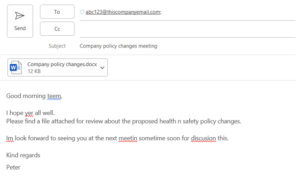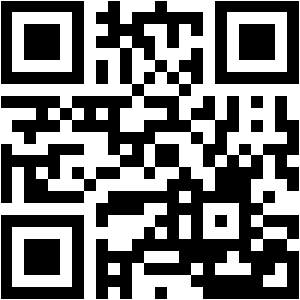| University | Massey University (MU) |
| Subject | ADMG554 Effective Business Communication |
Effective Business Communication
Read through the requirements below, complete all parts of the assessment and then save your work as either a Word document or a PDF file. Once you have saved your work click on the Assessment submission link within this course and upload your completed assessment to your tutor for marking.
Plagiarism
Please remember that presenting work that is not your own (e.g. content copied directly from the course material or websites) is considered plagiarism and is a violation of your student policy.
Plagiarised work will not be marked by your tutors and will result in a re-submission or fail.
Required
Question 1
For the scenario below, think about effective communication and the communication process, keeping in mind the concepts mentioned in the course chapters “Effective Communication” and “Steps of the Communication Process.”
After reading through both parts of the below scenario, take a moment to reflect on how effective the communication in this workplace scenario was. The big question: was it effective business communication or not?
Scenario
Recently, the team at ABC Ltd. have been working remotely and communicating primarily via videocall. Remote working is new to all employees and since it has been implemented, there have been an increased number of errors being made by competent members of the team. The team manager, John, has asked you to sit in on the next meeting to oversee how well the key information is being communicated and to provide feedback to him afterwards.
During the meeting, you notice that John’s camera is positioned too high, and the employees cannot see his face properly. His internet lags and some words he says are often cut off or unclear. You also notice that the employees become frustrated and disinterested. Many are typing while John is speaking about key topics, and the majority of employees look distracted.
- Based on what you have learnt about communication in this module, is John communicating effectively with his team? Explain your reason.
-
- An important report is due today, and John instructs Jane to have it to him by 5 pm. It turns out Jane had to leave the meeting early due to technical problems with her laptop. John did not realise this or await an answer from her and proceeded to bring the meeting to a close.
The course material states that the key steps of the communication process are an idea, encoding, decoding, feedback, communication channels, communication context and communication barriers.
Stuck! Do not Know Assessment Answers?
Hire NZ Native Experts 24/7.
Do you think that the communication in this meeting between John and Jane has met each step? For each of the following key steps, explain whether or not it was met and why:
- What is the “idea” being communicated between John and Jane?
- How was “encoding” carried out in this scenario by John?
- Did Jane “decode” the message correctly? Why or why not?
- How could “feedback” have been used to improve communication in this scenario?
- Identify any “communication barriers” in this situation.
- How did the “communication context” influence the interaction between John and Jane?
Question 2
Communication is identified by two main forms:
- Verbal communication: Includes both written (e.g., emails, letters) and oral communication (e.g., phone calls, face-to-face conversations).
- Non-verbal communication: Communication without words, such as gestures, facial expressions, or body language.
a) For each of the scenarios below, identify which form of communication is used, explaining your answer in one to two sentences.
- Jane sends an email to her staff about a company-wide meeting to discuss the Christmas close period, including proposed schedules and close-down dates.
- Bob has gone overseas on holiday and needs to find out the time – he does not speak the local language, so he asks a local person the time by tapping towards his wrist.
- Sally isn’t feeling well this morning, and her shift starts in 30 minutes. She calls her manager to let them know she won’t be able to come into work today.
b) Identify two advantages and two disadvantages for each form of communication.
Question 3
Scenario
James is the manager of a team of ten employees. Every morning, the team meets to discuss what tasks they must complete for the day ahead. James assigned Emma the task of sending an important contract to a key client before 12 pm. While speaking to Emma, James maintained eye contact, spoke in a clear and level tone, and explained in an easy-to-understand way what she must do. Emma put her phone away to avoid distractions, leaned in slightly to show interest, and nodded attentively. After James finished speaking, Emma smiled in her usual friendly tone and said, “No problem, James, I’ll send the contract out to the client before midday.
Based on the above information and what you have learned in the course material:
a) Has Emma showcased strong listening skills in this situation? Identify at least three or more listening skills used or not used to explain your answer.
b) Identify two ways that effective listening skills could benefit Emma in her professional life (with colleagues, opportunities, efficiency).
c) Identify two ways that effective listening skills could benefit Emma in her personal life (with friends, family, her community).
Buy Custom Assignment & Homework Solutions
Pay to NZ Native Writers | Cheap Cost & Plag Free
Question 4
Scenario
Peter is in charge of implementing some health and safety policy changes throughout the company and needs to meet with his team every second Friday to ensure the proposed changes are complete and ready to proceed by the start of the new year. To prepare for the meetings, Peter needs to send through an updated document regarding these policies for his team to review and give feedback during the meeting.
Below is an example email he has sent to his team regarding the policy changes and meeting schedule:

a) Considering the above email, identify and briefly describe which of the 7 C’s (Clear, Concise, Concrete, Correct, Coherent, Complete, Courteous) Peter has used (there are four of these) and which of the 7 C’s he has not used (three of these) in his email.
Keep the following questions in mind to help you identify each:
- Clear: Does the message clearly communicate its purpose? Is it easy to understand?
- Concise: Is the message brief and to the point, without extra information?
- Concrete: Does the email provide specific details to help the reader understand?
- Correct: Are there any spelling or grammar mistakes in the email?
- Coherent: Is the email consistent and logical, with all the information clearly connected and relevant to the main message?
- Complete: Does the email include all the necessary information the reader needs?
- Courteous: Is the tone polite and professional?
b) Rewrite Peter’s email ensuring that all 7 C’s have been applied to your new email.
In quest for a professional assignment help?
Flexible rates compatible with everyone’s budget
Are you stuck with your Effective Business Communication Assignment? Be stress-free! AI-free assignment help NZ is here for you. We assure you that our business communication assignment help services will make you productive and help you achieve high grades in your academic year. A free list of assignment samples written by PhD experts is also provided here that can help you boost your study power and check the quality of the report. So contact us today and get your high-quality assignment!
- LAWS390 Business Law for Māori Organisations Essay | VUW New Zealand
- Nursing Assignment 3 : Factors that Impact Registered Nurses’ Ability to Influence National Government Health Policy
- The Management and Behaviour or Pregnant Sows on Pasture Assignment 1 | Massey University (MU)
- HAS 962 Occupational Hygiene: Measurement Assessment 4 AIOH Technical Report | UOW
- IT00143 Install & Optimize Software Applications Assignment | Pacific Polytech
- Digital Tourism and Hospitality Assignment Report | Auckland University of Technology
- HEAL840 Critical Enquiry for Evidence Based Practice Additional Assessment Opportunity (AAO) Semester 1 2025
- RES903 Research Dissertation Assessment One | Nelson Marlborough Institute of Technology (NMIT)
- 71338 Managing Change Assessment 3 Strategy and Implementation Report | Open Polytechnic
- BSRV4601 Fundamentals Real Estate Assignment 1: Eligibility and licensing | Open Polytechnic (OP)


